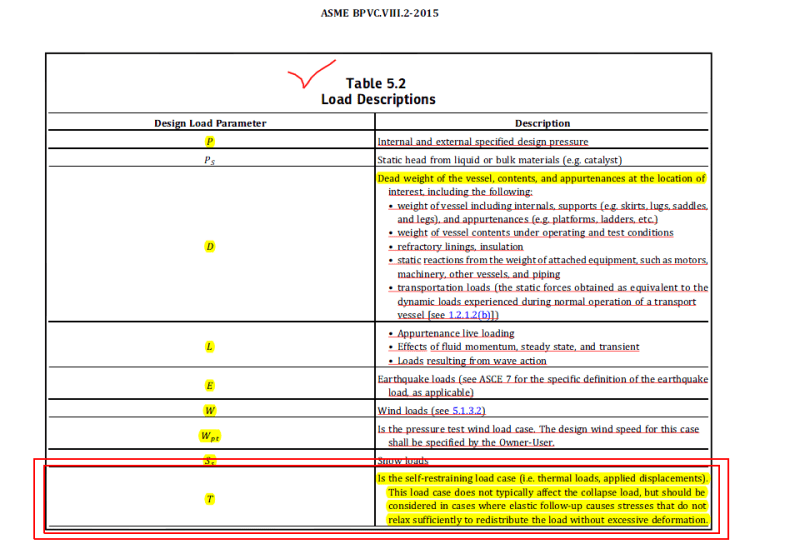HOUARI YAHIAOUI
Petroleum
- Dec 13, 2017
- 29
Hello experts
my question is about allowable loads on nozzles for pressure vessel.
the standard of the company wich I work at, has tabular alloawble values of forces (Fa,Fc,Fl) and moments (Mt,Mc,and Ml) according to flange rating.
The problem is when I choose to analyse loading for nozzles using Pv elite with the WRC 107 code, I found that there is three categories for loads on nozzles :
1.Substained
2.Expansion
3.Occasional
In our standard there is no mention of the category of the tabular loads. hence I guess that the tabular loads are substained loads normally, so what about the two other categories, how do I to obtain the limit values for forces (Fa,Fc,Fl) and moments (Mt,Mc,and Ml) to enter in pv ellite in order to analyse loads?
my question is about allowable loads on nozzles for pressure vessel.
the standard of the company wich I work at, has tabular alloawble values of forces (Fa,Fc,Fl) and moments (Mt,Mc,and Ml) according to flange rating.
The problem is when I choose to analyse loading for nozzles using Pv elite with the WRC 107 code, I found that there is three categories for loads on nozzles :
1.Substained
2.Expansion
3.Occasional
In our standard there is no mention of the category of the tabular loads. hence I guess that the tabular loads are substained loads normally, so what about the two other categories, how do I to obtain the limit values for forces (Fa,Fc,Fl) and moments (Mt,Mc,and Ml) to enter in pv ellite in order to analyse loads?


